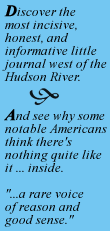Book Review--
James Webb, Born
Fighting: How the Scots-Irish Shaped America. New York: Broadway
Books (Random House), 2004; pp. 369; $25.95.
Countless immigrant
groups have influenced the development of American culture but
according to the author none more so than the Scots-Irish. James Webb,
former Marine, recipient of the Navy Cross and Secretary of the Navy
during the second Reagan administration is very obviously proud of his
Scots-Irish (or Ulster-Scot) ancestry. He has written a history and
sociology of that people that may be unsurpassed in establishing such
contributions to the American experience. Such influence had its
origins in the early 18th century when the first immigrants from
Ulster arrived. Webb traces their history back much further to the
ancient Celts of the British Isles who fought the Romans to a
standstill in the north (Hadrian’s Wall). The Ulster Scots, almost
entirely lowlanders from southwest Scotland and northwest England (the
border between Scotland and England meant little), were enticed to
Ireland in the early 17th century when the home regions became
seriously over populated. The purpose of the invitation was not merely
to relieve population pressures but more importantly to provide tenant
farmers for the Anglo-Irish aristocracy who had expropriated their
lands from the native Irish. As the tenants improved the land, the
landowners raised the rents. This imposition coupled with the passage
of the “Test Act” of 1703 which essentially outlawed the
Presbyterian faith drove them to emigrate, the first of the two great
emigrations from Ireland. Because of its religious freedom,
Pennsylvania was the principal destination in the colonies.
The immigrant
Ulster-Scots who were welcomed as a barrier to the Indians, first
settled on land in southeastern Pennsylvania. Despite its fertility
they did not stay long but moved west and south. Indeed, Webb suggests
that the United States might today resemble Chile, strung out along
the Atlantic seaboard were it not for the Scots-Irish migrations. They
pushed into the Appalachian Mountains and down the Virginia valleys
into present day North and South Carolina, Tennessee, Georgia and
Alabama and eventually the west. While they took their religion with
them, they gradually drifted away from the Presbyterian Kirk to become
mainly Baptists and Methodists. They took their music with them as
well, mainly fiddle music from Scotland and Ireland supplemented by
the banjo, which turned into modern day country music and Blue Grass.
And they fought.
Defense against Indian raids was a constant worry but one they could
adjust to using fighting skills brought with them from the border wars
along the Scottish-English frontier. They fought with each other as
well, carrying family feuds such as that between the Hatfields and
McCoys for generations, just as in the old country. Most historians
attribute the eventual victory of the Continental Army to the large
number of Scots-Irish on its muster rolls. In at least one of the key
battles, the Battle of Kings Mountain in North Carolina, the
Continental force consisted almost entirely of backwoods Scots-Irish
militiamen. The descendants of those early warriors have continued the
military tradition with substantial over-representation, particularly
in the Army and the Marine Corps, of both enlisted troops and
officers. As a result, the influence of the Scots-Irish military
tradition on civil-military relations has been profound. Webb does not
go into this relationship explicitly but from his account such
influence becomes evident to anyone who has studied the matter.
Several years ago Professor Richard Kohn of the University of North
Carolina (Naval War College Review, Summer 2002) suggested that
a severe gap exists between the military forces and the civilian
establishment. It was based on his perceptions of a disconnect between
the primarily politically liberal, civilian establishment and the
military forces. There is such a gap to be sure, but it does not
appear to exist between the heart of America exemplified by the
Scots-Irish and the officers and enlisted personnel of the
present-day, all volunteer force. One might crudely express this
dichotomy by referring to the famous (some say infamous) 2000 and 2004
county election maps. The red counties are those influenced by the
Scots-Irish and those that are blue represent the liberal elite (and
their hangers-on).
Which brings us to the politics of the Scots-Irish.
The key figure here was General, later President, Andrew Jackson. Born
in North Carolina, he was left an orphan while still in his teens
after which he emigrated from that state to the Tennessee frontier.
His later defeat of the British at the Battle of New Orleans in 1815
propelled him into the presidency and to a large extent cemented the
Scots-Irish into the Democratic Party that has endured down almost
until today. During the presidency of Ronald Reagan, himself part
Scots-Irish this allegiance began to shift with the “Reagan
Democrats” gradually shifting their predominant political alignment
to the Republicans.
The foregoing
description does not really do justice to Webb’s book. This reviewer
who is himself partly of Scots-Irish ancestry strongly recommends it
to anyone interested in the development of America.
--Robert
C. Whitten
“The name of American, which belongs to you, in your
national capacity, must always exalt the just pride of Patriotism,
more than any appellation derived from local discriminations.”
--George Washington

[ Who We Are | Authors | Archive | Subscription
| Search | Contact Us ]
© Copyright St.Croix Review 2002